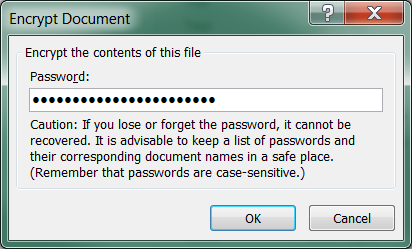Introduction
In the age of digital transformation, documents have evolved from being stacks of paper in dusty file cabinets to bytes of data stored in the vast realms of the internet. With this transition, the need for safeguarding sensitive information has become more critical than ever. Document encryption emerges as a formidable solution in the realm of secure document management, offering protection against unauthorized access, data breaches, and cyber threats.
This blog post is your guide to understanding document encryption, covering why it is essential, what it entails, and how to implement it effectively. Join us on this journey to fortify your digital fortress and ensure the safety of your confidential documents.
Why Document Encryption Matters
Data Security in the Digital Age
In the digital era, data is akin to a treasure trove. Organizations, businesses, and individuals store and transmit vast amounts of sensitive information daily. This information includes financial records, legal documents, medical records, and personal communications. Protecting this data is imperative to maintain the trust of clients, customers, and employees.
Rising Cyber Threats
The digital landscape is fraught with cyber threats. From hackers to malicious software, the risk of data breaches is constant. Document encryption acts as a robust defense mechanism, rendering the data indecipherable to anyone without the requisite decryption key.
Regulatory Compliance
Many industries are bound by stringent regulations that necessitate the secure handling of sensitive data. Failing to comply with these regulations can result in severe penalties. Document encryption is often a requirement to ensure compliance with laws like the General Data Protection Regulation (GDPR) and the Health Insurance Portability and Accountability Act (HIPAA).
Understanding Document Encryption
What is Document Encryption?
Document encryption is a process that involves converting plain text into ciphertext using a cryptographic algorithm and a secret encryption key. This ciphertext can only be converted back into plain text by someone who possesses the corresponding decryption key. In essence, it’s like putting your sensitive document in a virtual safe and locking it with a key that only you possess.
Symmetric vs. Asymmetric Encryption
There are two primary types of encryption: symmetric and asymmetric.
Symmetric Encryption: In this method, the same key is used for both encryption and decryption. It’s like having a single key to lock and unlock your virtual safe. While it’s efficient, the key must be securely shared between the parties involved, which can be a challenge.
Asymmetric Encryption: Asymmetric encryption uses a pair of keys – a public key for encryption and a private key for decryption. This is akin to having a two-key system for your virtual safe. It’s more secure than symmetric encryption because the private key never leaves the owner’s possession.
Implementing Document Encryption
Selecting the Right Encryption Algorithm
Choosing the right encryption algorithm is crucial to document security. Some commonly used algorithms include:
AES (Advanced Encryption Standard): A widely adopted symmetric encryption algorithm known for its speed and security.
RSA: A popular asymmetric encryption algorithm for secure key exchange.
PGP (Pretty Good Privacy): A data encryption and decryption program that provides cryptographic privacy and authentication.
Key Management
Key management is a critical aspect of document encryption. Protecting encryption keys is as important as encrypting the documents themselves. Best practices for key management include:
Strong Passwords: Create strong, unique passwords for your encryption keys.
Key Rotation: Change encryption keys regularly to enhance security.
Multi-Factor Authentication: Implement multi-factor authentication to access encryption keys.
Secure Storage: Store keys in a secure location, preferably offline.
User Training and Awareness
The success of document encryption also depends on user awareness and training. All individuals who handle encrypted documents should understand how to encrypt and decrypt files securely. This includes recognizing phishing attempts and maintaining the confidentiality of encryption keys.
Document Backup and Recovery
Incorporate document backup and recovery strategies into your encryption plan. Regularly back up encrypted documents, and ensure you have a reliable process in place for recovering data in case of accidental loss or key compromise.
Document Encryption in Action
Let’s walk through a practical example of document encryption using a popular tool.
Using BitLocker for Windows
BitLocker is a built-in encryption tool in Windows that can encrypt entire drives or specific files and folders. Here’s how to encrypt a document using BitLocker:
Right-click on the document you want to encrypt.
Select Properties.
In the General tab, click Advanced.
Check the box that says, Encrypt contents to secure data.
Click OK and then Apply.
BitLocker will encrypt the document, making it accessible only to users with the appropriate decryption key.
Document Encryption Best Practices
To maximize the effectiveness of document encryption, consider the following best practices:
Regular Updates: Keep your encryption software up to date to patch any security vulnerabilities.
Access Control: Limit access to encrypted documents to only those who need it.
Data Classification: Identify which documents need encryption based on their sensitivity.
Auditing and Monitoring: Implement a system for auditing and monitoring access to encrypted documents.
Incident Response Plan: Develop a plan to respond to any security incidents involving encrypted documents.
Conclusion
Document encryption is the fortress that guards your sensitive information in the digital realm. In a world where data is currency and cyber threats loom, safeguarding your documents is non-negotiable. Whether you’re a business owner, a healthcare provider, or an individual with personal documents to protect, document encryption is a fundamental aspect of secure document management.
By understanding the importance of document encryption, the mechanics of encryption, and best practices for its implementation, you can ensure the safety and confidentiality of your documents. So, take the necessary steps to secure your digital fortress and keep your sensitive information safe from prying eyes.



